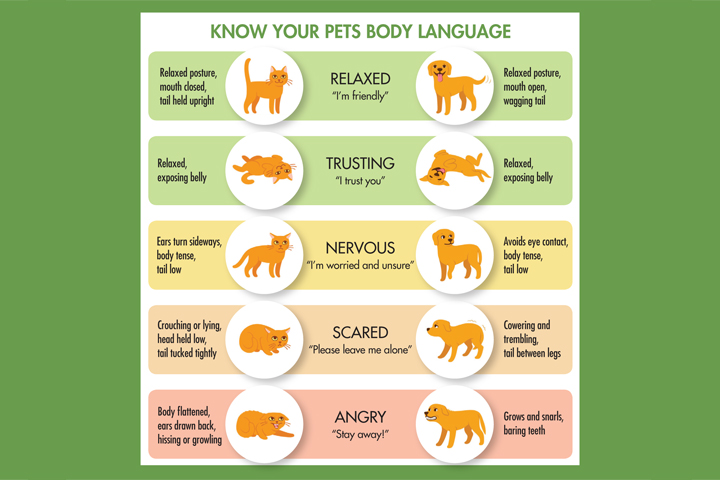The Dog Days of Summer Are (Not Completely) Over
With most of us returning to work after months spent at home, pets may experience as much stress as their owners.

Going back to work can be ruff … particularly for our four-legged friends who’ve loyally kept us company these past few months. We are the ones who invaded their daily routine with our work from home schedules during quaren-time.
Even under normal circumstances, separation anxiety can be a concern with pets. Now with COVID-19, this issue is more significant and widespread. While anxiety may be better known in dogs, it’s quite common in cats as well. Although some cats may act as though it’s not true, they are social creatures that often form strong bonds with their human family.
Now that our area has entered the green phase and life is headed to its new normal, we need to consider what the coming changes mean for our furry companions.
If your pet has previously shown signs of separation anxiety—or you’re worried that they will now—keep reading to learn how to spot the problem and how to treat it.
Signs of Separation Anxiety
 As you begin the transition back to work at your non-home office, your pet may need some help with the transition, too. Most pets are very attuned to our anxiety, which will trigger anxiety in them as well. And after months of having us home 24/7 only to have us abruptly change schedules, even well tempered pets may experience some separation anxiety.
As you begin the transition back to work at your non-home office, your pet may need some help with the transition, too. Most pets are very attuned to our anxiety, which will trigger anxiety in them as well. And after months of having us home 24/7 only to have us abruptly change schedules, even well tempered pets may experience some separation anxiety.
So, what exactly does separation anxiety look like in our pets?
Frequent barking, meowing or whining may be common pet behaviors when an owner leaves. If it lasts for less than 15-minutes before your pet settles down, it’s likely your furry friend will adjust and get used to the transition on their own. But if that behavior continues for longer, or escalates to more serious behaviors, your pet may be having something akin to a panic attack.
 In dogs, some of these escalated behaviors may include peeing or pooping where they shouldn’t, chewing household items, scratching and trying to get out of the house, excessive panting, heightened levels of aggression and not eating.
In dogs, some of these escalated behaviors may include peeing or pooping where they shouldn’t, chewing household items, scratching and trying to get out of the house, excessive panting, heightened levels of aggression and not eating.
Cats, too, may refuse to eat, become more aggressive and pant excessively. Yet some cats may start hiding or becoming more reclusive than usual, avoiding interactions with other pets or people in the household. Also check for dilated pupils.
If you’re not sure how your pet will react to your return-to-work schedule, make a video of them during a test run. Set up a camera in your home where you can see your pet, hit record, and leave for a while. When you return home, watch the video of your pet at home to see if they’re exhibiting any of the tell tale symptoms.
Help from an Expert
 If your pet is showing signs of anxiety, consider hiring an expert, such as a trainer or animal behaviorist.
If your pet is showing signs of anxiety, consider hiring an expert, such as a trainer or animal behaviorist.
Sometimes called animal psychologists, animal behaviorists are professionals who’ve earned a Masters or PhD degree in animal behavior and animal learning, and are equipped with science-backed tools like behavior modification. They’ll help by observing and diagnosing the cause of your pet’s problematic behaviors. Then they can create and teach you a customized treatment plan.
Of course, there are levels of expertise within the field of animal behavior, from trainers working with dogs with behavior issues, to certified animal behaviorists, to board-certified veterinary behaviorists (veterinarians who specialize in behavior). You can find professionals for any level of problems you may encounter with your unhappy pet, just be sure to do some research.
“Anyone can call himself or herself a ‘trainer,’ even with absolutely no credentials. Unfortunately, there are some individuals who advertise their training service but, not only do they lack credentials, they also employ unethical, force-based and shock-collar based training services,” says Dr. Ilana Reisner of Reisner Veterinary Services, LLC. “Pet guardians should research their options carefully before entrusting a beloved family member to any dog professional.”
You may be wondering, when working with a trainer or an animal behaviorist, how long does this type of intervention take before you see results?
Rich Simmons of Misguided Mutts Dog Behavior Training says, “For a really nervous animal, it’s most likely going to be a higher hill to climb. It’s probably going to be more than just a couple of weeks.” On the other hand, for those pets that are only slightly anxious, you may start to see results within a month.
Remember, every pet is different, so there’s no definitive way to predict how long before your pet starts to behave better. Be patient.
Easing Your Pet’s Anxiety
 Luckily, there are ways to lessen your pet’s anxiety—including tips and tricks animal behaviorists recommend. With practice, you can try many of them on your own.
Luckily, there are ways to lessen your pet’s anxiety—including tips and tricks animal behaviorists recommend. With practice, you can try many of them on your own.
For example, try changing up your routine for leaving the house. Picking up your keys or backpack or putting on your shoes may signal to your pet that you’re preparing to leave, which can trigger anxiety. Instead, let your pet see you do these things repeatedly during the day but don’t leave the house. This change will weaken the negative association of your behavior with you leaving your pet.
Or create a positive association with leaving the house. Give your pet a small reward, like a healthy treat, to offset feelings of anxiety.
Make sure your dog isn’t bored while you’re out of the house and at work. Have a few toys available during the day for your pet to play with, or stuff treats like meat, cheese and kibble into a Kong (a hollow rubber pet toy) and freeze it, so your dog has to work to get to the treats.
For cats, give them a scratching post and toys so they’re can play and not get bored. These activities help your pets stay active and mentally stimulated during the day and divert their energy away from anxious behaviors.
Rich Simmons says, “If you mentally stimulate a dog every day for an hour and 15 minutes, or give them an hour walk and feed them a good diet, this puts everything in the right direction.”
More Than Just A Last Resort
If your pet still experiences high levels of anxiety or needs help to calm down while you’re away at work, medication is another option.

“I would certainly try to change the perception of medication from a ‘last resort’ to a practical method of reducing stress and worry so the pet can learn a little better,” says Ilana Reisner. “Anti-anxiety and other behavioral medications can improve the welfare of anxious animals. I would consider them tools, rather than a last resort.”
For pets that are a little anxious, over-the-counter supplements may be enough to keep them calm during times of increased stress. But, pets with significant anxiety may need more—including prescription oral medications.
Before giving your pet any anxiety supplements or medications, go for a check-up at your veterinarian. Your vet will consider your pet’s weight, stress levels and other pet medications to determine if supplements or medications—and what dosages—would be recommended.
Remember that giving anxiety medication to your pet need not be a long-term solution. Some pets undergoing behavior training will take medication along with their training to help with behavior modification, but may not need the meds once their behavior has improved.
With the right guidance from a trainer or behaviorist, plus practices and medication, your pet’s anxiety will be manageable in no time—and they’ll probably thank you with plenty of kisses!
